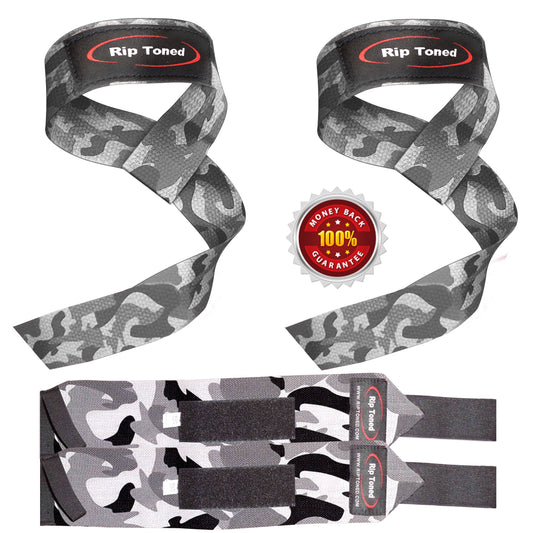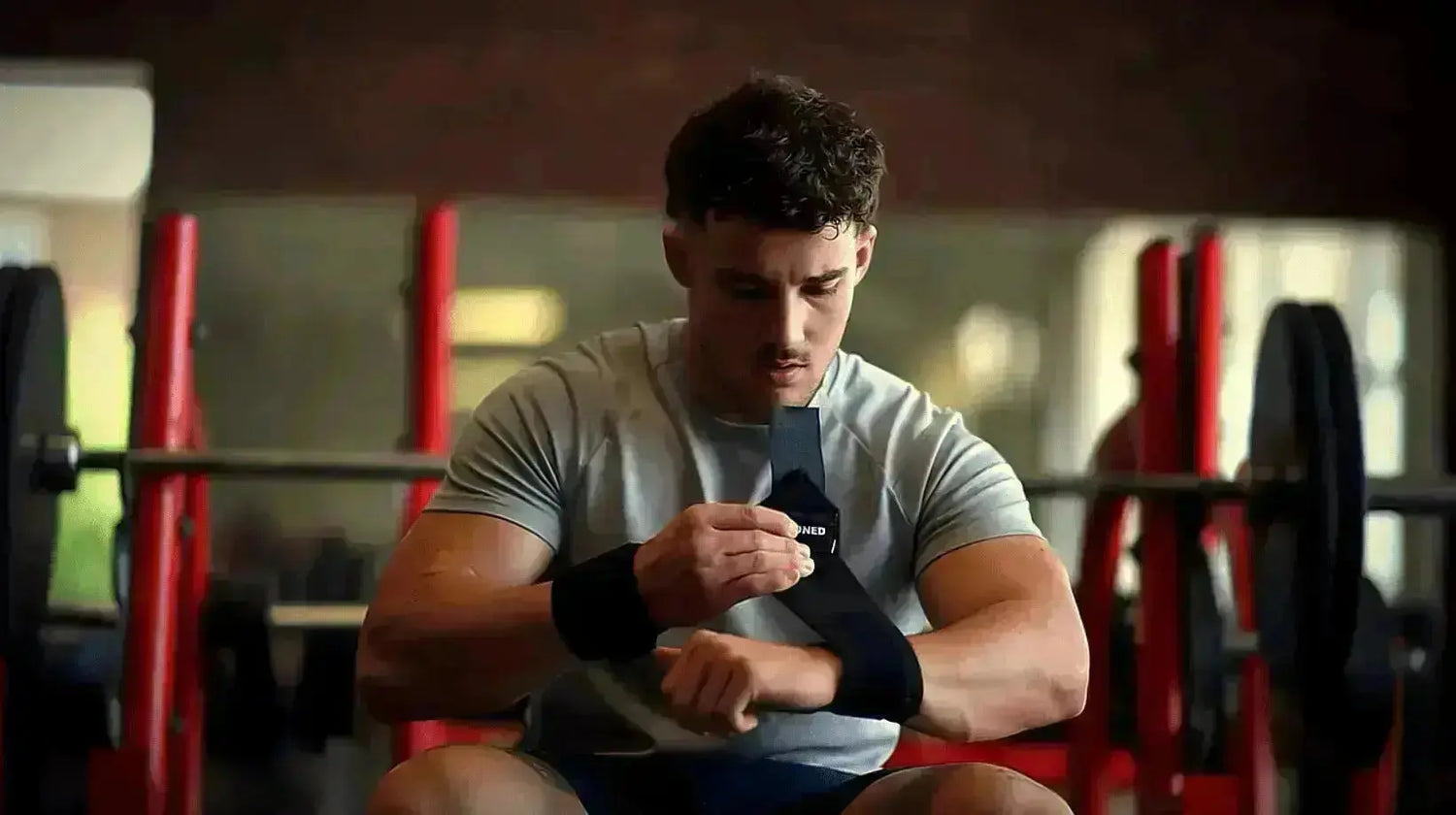
What Are Wrist Wraps For - Ultimate Guide to Weightlifting Wrist Support
Weightlifting Wrist Support
-
Lifting Straps & Wrist Wraps Combo Pack - Blue
Lift Harder. Train Smarter. Recover Better — Combo Style. The Rip Toned Wrist...
Regular price $13.99 USDRegular priceUnit price per$19.97 USDSale price $13.99 USDSale -
Lifting Straps & Wrist Wraps Combo Pack - Blue Less Stiff (18-inch Wrist Wraps)
Lift Harder. Train Smarter. Recover Better — Combo Style. The Rip Toned Wrist...
Regular price $14.99 USDRegular priceUnit price per$22.97 USDSale price $14.99 USDSale -
Lifting Straps & Wrist Wraps Combo Pack - Blue Stiff (18-inch Wrist Wraps)
Lift Harder. Train Smarter. Recover Better — Combo Style. The Rip Toned Wrist...
Regular price $14.99 USDRegular priceUnit price per$22.97 USDSale price $14.99 USDSale -
Lifting Straps & Wrist Wraps Combo Pack - Full Black Less Stiff (18-inch Wrist Wraps)
Lift Harder. Train Smarter. Recover Better — Combo Style. The Rip Toned Wrist...
Regular price $14.99 USDRegular priceUnit price per$22.97 USDSale price $14.99 USDSale -
Lifting Straps & Wrist Wraps Combo Pack - Full Black Stiff (18-inch Wrist Wraps)
Lift Harder. Train Smarter. Recover Better — Combo Style. The Rip Toned Wrist...
Regular price $14.99 USDRegular priceUnit price per$22.97 USDSale price $14.99 USDSale -
Lifting Straps & Wrist Wraps Combo Pack - Red
Lift Harder. Train Smarter. Recover Better — Combo Style. The Rip Toned Wrist...
Regular price $13.99 USDRegular priceUnit price per$19.97 USDSale price $13.99 USDSale -
Lifting Straps & Wrist Wraps Combo Pack - Red Less Stiff (18-inch Wrist Wraps)
Lift Harder. Train Smarter. Recover Better — Combo Style. The Rip Toned Wrist...
Regular price $14.99 USDRegular priceUnit price per$22.97 USDSale price $14.99 USDSale -
Lifting Straps & Wrist Wraps Combo Pack - Red Stiff (18-inch Wrist Wraps)
Lift Harder. Train Smarter. Recover Better — Combo Style. The Rip Toned Wrist...
Regular price $14.99 USDRegular priceUnit price per$22.97 USDSale price $14.99 USDSale -
Lifting Straps & Wrist Wraps Combo Pack - Gray Camo
Lift Harder. Train Smarter. Recover Better — Combo Style. The Rip Toned Wrist...
Regular price $13.99 USDRegular priceUnit price per$19.97 USDSale price $13.99 USDSale -
Lifting Straps & Wrist Wraps Combo Pack - Gray Camo Less Stiff (18-inch Wrist Wraps)
Lift Harder. Train Smarter. Recover Better — Combo Style. The Rip Toned Wrist...
Regular price $14.99 USDRegular priceUnit price per$22.97 USDSale price $14.99 USDSold out -
Lifting Straps & Wrist Wraps Combo Pack - Gray Camo Stiff (18-inch Wrist Wraps)
Lift Harder. Train Smarter. Recover Better — Combo Style. The Rip Toned Wrist...
Regular price $14.99 USDRegular priceUnit price per$22.97 USDSale price $14.99 USDSold out -
Lifting Straps & Wrist Wraps Combo Pack - Green
Lift Harder. Train Smarter. Recover Better — Combo Style. The Rip Toned Wrist...
Regular price $13.99 USDRegular priceUnit price per$19.97 USDSale price $13.99 USDSale -
Lifting Straps & Wrist Wraps Combo Pack - Green Camo
Lift Harder. Train Smarter. Recover Better — Combo Style. The Rip Toned Wrist...
Regular price $13.99 USDRegular priceUnit price per$19.97 USDSale price $13.99 USDSale -
Lifting Straps & Wrist Wraps Combo Pack - Orange
Lift Harder. Train Smarter. Recover Better — Combo Style. The Rip Toned Wrist...
Regular price $13.99 USDRegular priceUnit price per$19.97 USDSale price $13.99 USDSold out -
Lifting Straps & Wrist Wraps Combo Pack - Pink Camo
Lift Harder. Train Smarter. Recover Better — Combo Style. The Rip Toned Wrist...
Regular price $13.99 USDRegular priceUnit price per$19.97 USDSale price $13.99 USDSale -
Lifting Straps & Wrist Wraps Combo Pack - Purple Camo
Lift Harder. Train Smarter. Recover Better — Combo Style. The Rip Toned Wrist...
Regular price $13.99 USDRegular priceUnit price per$19.97 USDSale price $13.99 USDSale -
Lifting Straps & Wrist Wraps Combo Pack - Yellow
Lift Harder. Train Smarter. Recover Better — Combo Style. The Rip Toned Wrist...
Regular price $13.99 USDRegular priceUnit price per$19.97 USDSale price $13.99 USDSale -
Lifting Straps & Wrist Wraps Combo Pack - Yellow Fluorescent
Lift Harder. Train Smarter. Recover Better — Combo Style. The Rip Toned Wrist...
Regular price $13.99 USDRegular priceUnit price per$19.97 USDSale price $13.99 USDSale -
Wrist Wraps (Less Stiff) - Blue
Lift Smarter. Train Safer. Recover Stronger Meet your new training essential:...
Regular price $17.99 USDRegular priceUnit price per$19.99 USDSale price $17.99 USDSale -
Wrist Wraps (Less Stiff) - Black
Lift Smarter. Train Safer. Recover Stronger Meet your new training essential:...
Regular price $17.99 USDRegular priceUnit price per$19.99 USDSale price $17.99 USDSale
Wrist Wraps Reviews
-

Almost 30K Reviews
Used by over 1,000,000 lifters worldwide
-
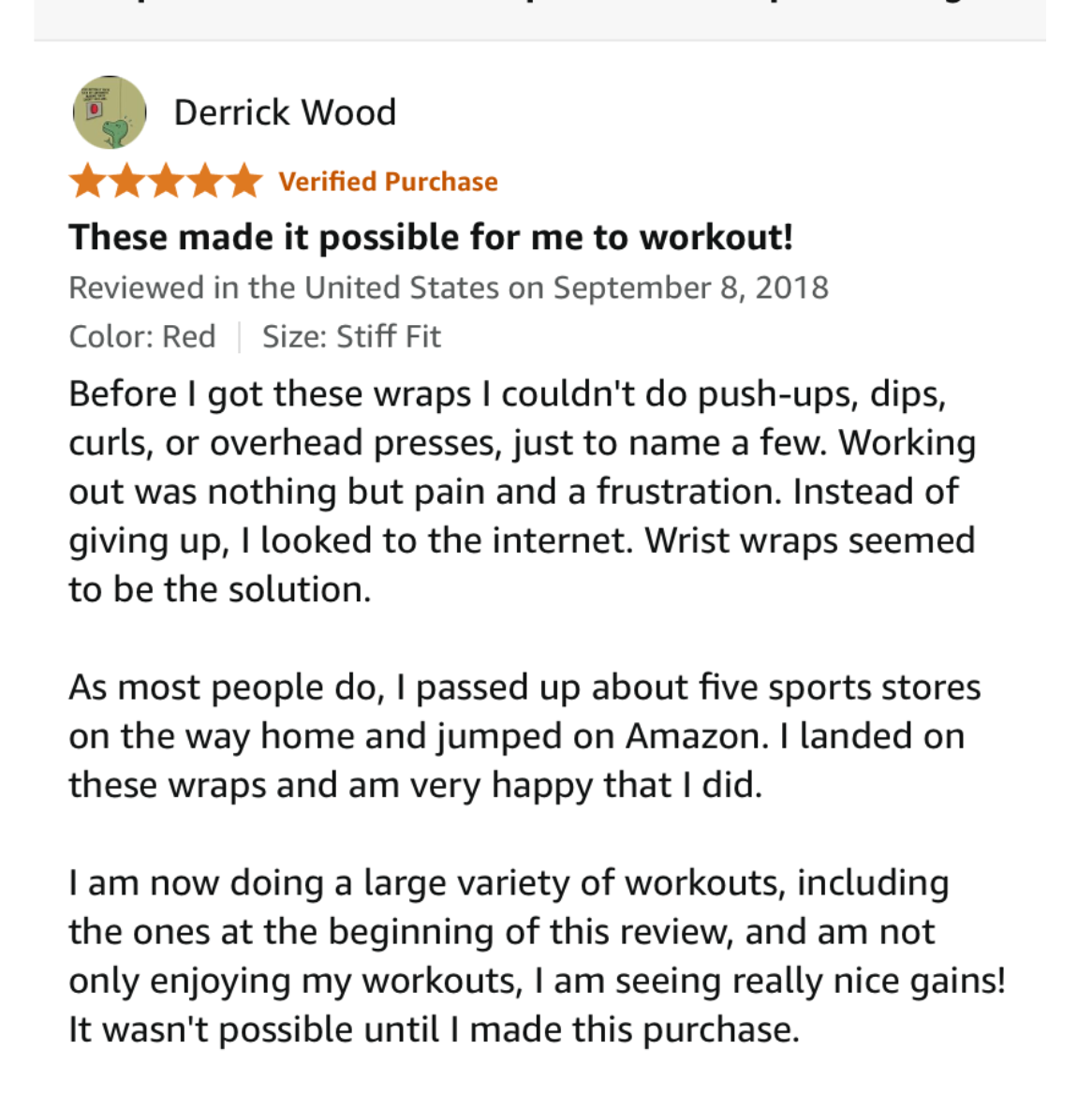
Derrick's Wraps Story
Thousands more similar reviews...
-
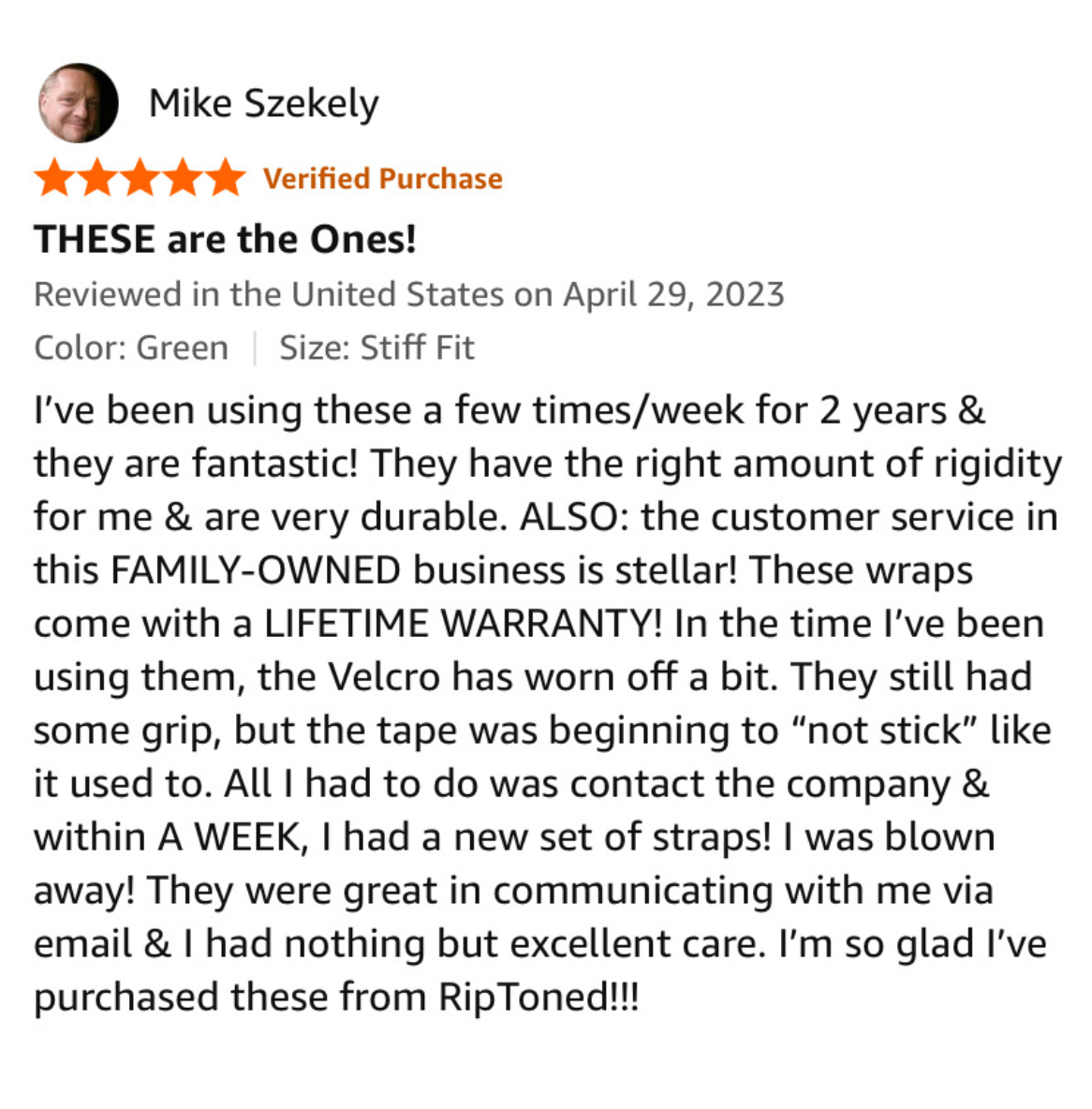
Makes Us Blush a Little :)
"Fantastic" "Durable" "Warranty"... Need More?
Our Wrist Wraps in the Trenches
-
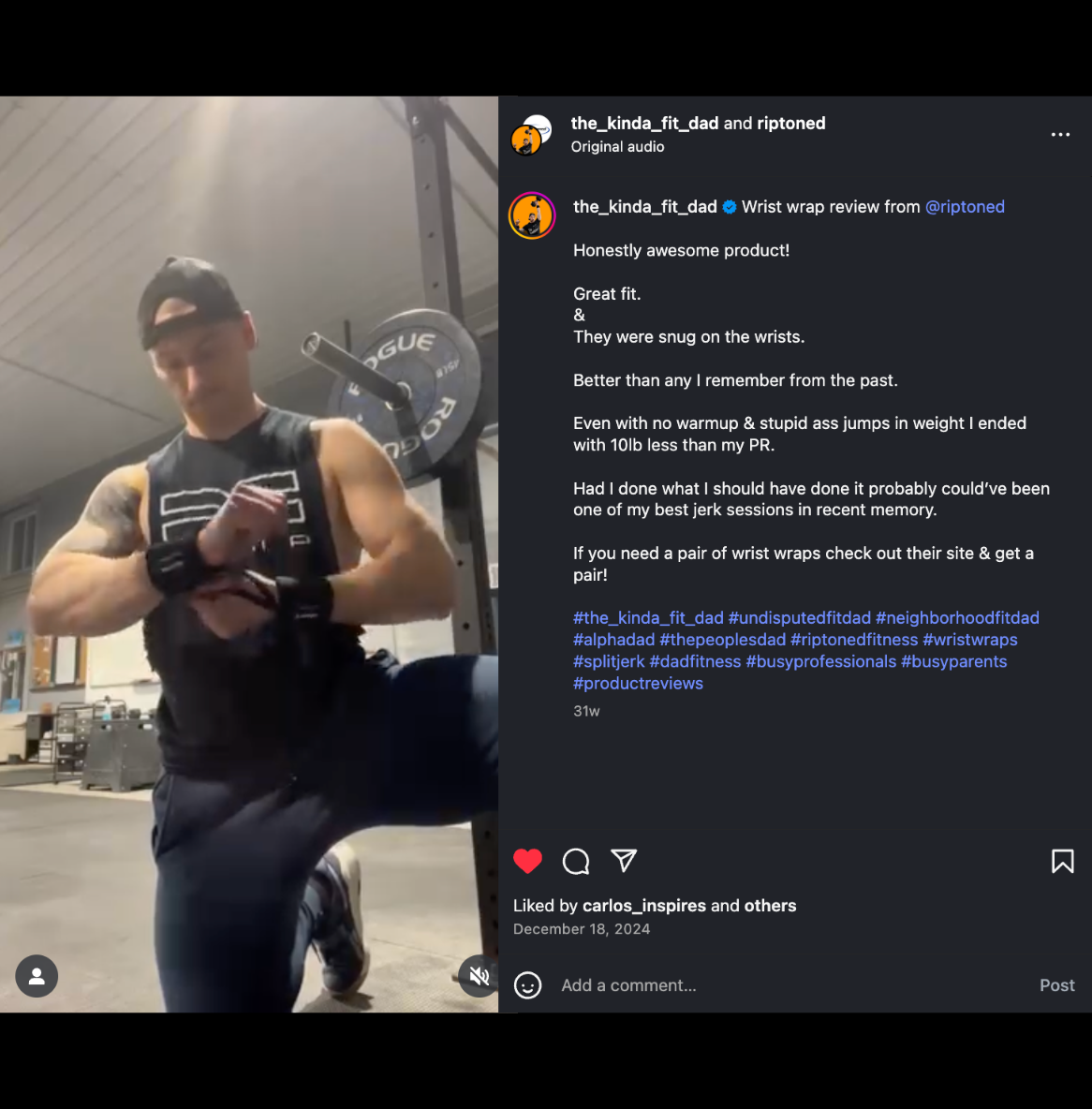
@the_kinda_fit_dad
Rockin' our wrist wraps.
-
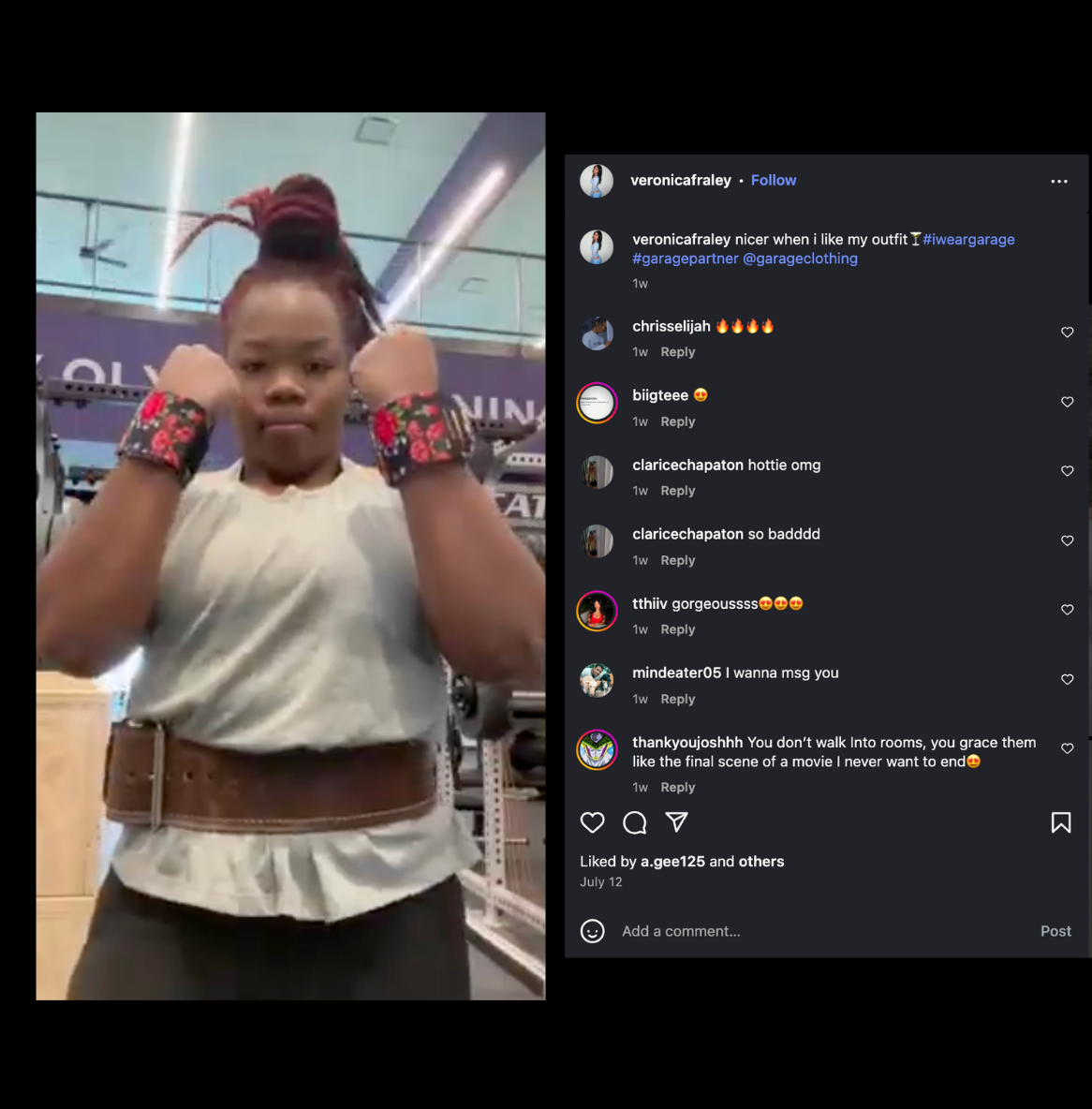
@veronicafraley
Loving the floral wraps
-
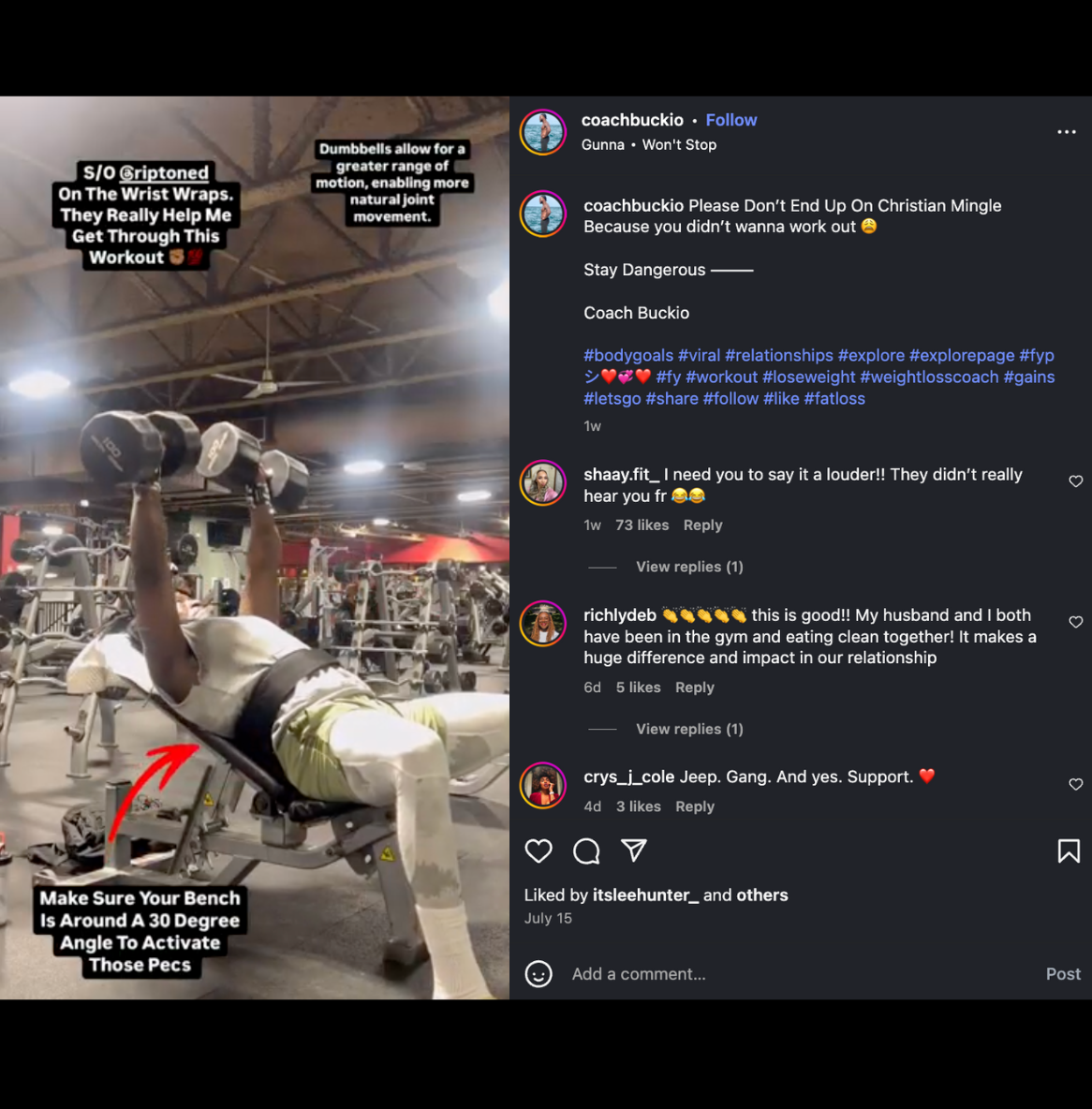
@coachbuckio
Pressing weight
Rip Toned USPA What Are Wrist Wraps For
Ever watched someone at the gym struggling with heavy bench presses or overhead movements and wondered why their form starts breaking down? The answer often lies in their wrists giving out before their muscles do. That's exactly what wrist wraps are for - they're your secret weapon for maintaining solid form and pushing past those frustrating plateaus.
Think of wrist wraps as your training partner that never misses a session. They're not just fabric around your wrists; they're engineered support systems designed to keep your wrists stable, aligned, and injury-free during heavy lifting. Whether you're a weekend warrior hitting personal records or a competitive powerlifter preparing for your next meet, understanding what wrist wraps are for can completely transform your training experience.
Collection Description
Discover the complete world of weightlifting wrist wraps and unlock your true lifting potential. Our comprehensive collection covers everything you need to know about what are wrist wraps for, from basic support during everyday workouts to competition-grade stability for maximum lifts. We break down the science, share real-world applications, and help you choose the perfect wrap for your specific training style. No gym bro science here - just practical, tested advice from lifters who've been there.
Why Choose Wrist Wraps for Your Training?
Wrist straps and lifting wrist wraps are essential tools for serious lifters, designed to deliver crucial support for the wrist during heavy weight lifting sessions. Your wrists are a complex structure of bones, ligaments, and tendons that endure intense stress during compound lifts like bench presses and overhead presses. Unlike muscles, the wrist joint cannot be directly strengthened through traditional training, making it a common weak link under heavy loads and increasing the risk of strain or injury.
Using powerlifting wrist wraps helps reduce tension, wraps provide support against overload, and keep your form intact. Many lifters only realize their value after experiencing wrist discomfort or missed lifts. However, those who follow a smart guide to wrist protection know these tools are not a sign of weakness—they are a safeguard for long-term progress. Professional athletes in powerlifting, Olympic lifting, and CrossFit rely on them, just as they might also use knee wraps or weight lifting straps, to maintain joint integrity and peak performance. Protect your wrists, train harder, and stay in the game longer—whether or not weight lifting gloves are suitable for your needs.
Key Features of Our Wrist Wraps
Premium Rip Toned weightlifting wraps and other high-quality models are built for serious lifting, offering features that set them apart from basic athletic supports. These lifting wrist wraps deliver graduated compression that’s tighter at the wrist joint while still allowing optimal circulation through the forearm. This targeted design is exactly what wrist wraps are for—providing stability where you need it most without cutting off blood flow.
When you look for wraps for your training, construction quality is critical. Wraps provide support through reinforced stitching to handle heavy lifts, thumb loops for precise positioning, and length variations to match your lifting style. Powerlifting wrist wraps often use stiffer materials for maximum support in competitive settings, while training wraps strike a balance between comfort and support for higher volume work.
The closure system—whether Velcro, elastic, or a hybrid—should offer secure, adjustable tension that’s easy to fine-tune between exercises. Just like weight lifting straps or knee wraps, these details make the difference between average wraps and premium wrist wraps built for performance.
Benefits of Using Wrist Wraps
Enhanced Protection
So, exactly, what are wrist wraps for? The primary benefit of understanding lies in injury prevention, which saves both your training progress and your wallet. Wrist injuries are notoriously slow to heal because these joints bear weight constantly throughout daily life, not just during training.
A benefit of wrist wraps is aiding the recovery process by supporting good form. A good wrap will both improve wrist stability and take strain off your wrist joint. This protection becomes increasingly valuable as you advance in your lifting career and handle heavier weights that place exponentially greater stress on these relatively small joints.
Think about the biomechanics: during a heavy bench press, your wrists need to stay in a neutral position while handling significant downward force.
Without adequate support, they can hyperextend or bend sideways, increasing the risk of injury or overuse issues. Wrist wraps provide essential support by stabilizing the joint, maintaining proper alignment, and evenly distributing pressure. This is especially important for lifters with past wrist injuries or naturally flexible joints, who are more prone to injury.
Improved Performance
Wrist wraps are for performance enhancement as well by creating a more stable kinetic chain from your hands to your core. When your wrists are properly supported and aligned, you can focus your mental energy on moving the weight rather than worrying about joint stability.
This psychological benefit translates into more aggressive lifting, better focus on muscle recruitment, and ultimately stronger performance across all pressing movements. Studies measuring a subjective sense of "wrist stability" routinely find benefits to wearing wrist wraps, confirming what experienced lifters have known for decades.
The performance benefits extend beyond just feeling more confident. Proper wrist alignment allows for optimal force transfer from your arms through the bar, reducing energy leaks that occur when joints move out of their strongest positions.
This mechanical advantage means you can potentially handle heavier loads or complete more repetitions at submaximal weights. Many lifters report immediate improvements in their bench press, overhead press, and even rowing movements when they first start using quality wrist wraps, simply because they can finally maintain proper form throughout their entire range of motion.
Reduced Fatigue
Wrist wraps are an often-overlooked tool for reducing fatigue during high-volume training sessions. The wrists are supported by small muscles and stabilizers that can tire out faster than your primary movers during compound exercises. This fatigue can cause a burning sensation, reduced grip strength, and poor form as your workout progresses. Wrist wraps provide external support, allowing these smaller muscles to focus on fine motor control rather than stabilization.
The benefits are especially noticeable during workouts with multiple pressing exercises or high-rep sets. Without wrist wraps, fatigue can compromise your form by the later exercises, limiting your ability to fully engage your target muscles.
With the right support, you can maintain proper form throughout your session, leading to better muscle development and more effective training. This is particularly helpful for powerlifters during peak training or CrossFit athletes tackling high-intensity conditioning workouts, where maintaining form is critical.
Better Form
Wrist wraps play a crucial role in supporting movement quality during workouts. Poor wrist positioning can throw off your entire kinetic chain, leading to compensations that affect performance and safety.
For example, if your wrists collapse into extension during a bench press, it can cause your shoulders to internally rotate, elbows to flare, and core stability to decrease. Wrist wraps help keep your wrists in a neutral position, allowing your joints to function optimally.
Proper wrist support not only improves form but also enhances muscle targeting. When your joints are correctly aligned, the intended muscles can work through their full range of motion without relying on compensating muscle groups.
This leads to better muscle development, fewer overuse injuries, and more efficient movement patterns—patterns you can carry over even when training without wraps. Essentially, wrist wraps act as a tool to teach your nervous system what proper alignment should feel like.
How to Choose the Right What Are Wrist Wraps
Length Considerations
Understanding what wrist wraps are for different training styles starts with selecting the appropriate length for your specific needs. Shorter wraps (12-14 inches) provide targeted support directly around the wrist joint, making them ideal for Olympic weightlifting movements where wrist mobility is crucial.
These shorter options allow for quick wrapping and unwrapping between exercises while still providing adequate support for most training scenarios. They're perfect for lifters who primarily need support during pressing movements but want to maintain full wrist mobility for pulling exercises.
Longer wraps (18-24 inches) offer more comprehensive support by extending coverage up the forearm, creating a more rigid platform for maximum lifts. Powerlifters often prefer these lengths for competition because they provide the most stability during max attempts.
However, the trade-off is reduced mobility and longer setup time between exercises. Medium-length wraps (16-18 inches) represent a popular compromise, offering substantial support while maintaining reasonable practicality for most training sessions. Your choice should reflect your training priorities, competition requirements, and personal comfort preferences.
Material Quality
The materials used in wrist wraps play a key role in their performance and durability, making them an important consideration when choosing the right pair. High-quality wraps typically combine soft cotton for comfort, elastic fibers for stretch and flexibility, and synthetic materials for durability and moisture resistance. The weave pattern also matters—tight weaves provide strong support but can trap heat, while looser weaves allow better ventilation but offer less rigidity.
Premium wraps are designed to maintain their elasticity through countless workouts and wash cycles, while cheaper options often lose their support and quickly wear out. When shopping, prioritize wraps with clear material details and avoid ones that feel rough or have a chemical smell, as these can indicate poor quality. Investing in well-made wraps not only enhances performance but also saves money in the long run by lasting far longer than budget alternatives.
Closure System
The closure mechanism represents a critical decision point when determining what wrist wraps are for your specific training approach. Traditional Velcro closures offer infinite adjustability and secure hold but can collect lint and debris over time, potentially losing their grip strength.
They're excellent for training sessions where you'll adjust tension between exercises or need to remove wraps completely for certain movements. Velcro also allows for easy one-handed adjustment, which can be valuable during timed workouts or when your lifting partner isn't available to help.
Elastic closures provide a more streamlined profile and consistent tension but offer less adjustability once applied. They're popular among competitive lifters who want to minimize bulk and maximize support during specific lifts.
Some premium wraps feature hybrid systems combining elastic material with Velcro tabs for fine-tuning, offering the best of both worlds. Consider your typical training routine, whether you'll be adjusting wraps frequently, and your preference for convenience versus customization when making this choice.
How to Put on Wrist Wraps for Better and Faster
What Are Wrist Wraps for Specific Exercises and Training Types
What Are Wrist Wraps for Bench Press
The bench press represents the perfect example of what wrist wraps are for in powerlifting movements. During heavy bench pressing, your wrists must support the entire load while maintaining neutral alignment to allow optimal force transfer through your arms and chest.
Without proper support, wrists often hyperextend under heavy loads, creating a weak link that limits your pressing power and increases injury risk. Wraps are generally better for increased wrist stability and control and pressing exercises, making them particularly valuable for bench press training and competition.
The biomechanics of bench pressing place unique demands on your wrists that make wrap selection crucial. You need enough support to maintain neutral alignment without restricting the slight adjustments necessary for proper bar path and grip positioning.
Many powerlifters use stiffer wraps for competition bench pressing to maximize support during max attempts, while using more flexible wraps during training to maintain some proprioceptive feedback. The key is finding wraps that provide stability without completely eliminating your ability to make fine adjustments to hand position and bar path throughout the lift.
Powerlifting and Competition Use
Competitive powerlifting represents the pinnacle of understanding how wrist wraps are for maximum performance under extreme loads. Competition rules typically allow specific wrap lengths and materials, making it essential to train with legal equipment that you'll use on meet day.
The psychology of competition wraps differs from training wraps - they're applied tighter, provide maximum support, and are intended for single maximum efforts rather than multiple sets. This requires practice with both the application technique and the feeling of lifting in competition-tight wraps.
The strategic use of wraps in powerlifting extends beyond just physical support to include psychological confidence and ritual. Many lifters develop specific wrapping routines that help them enter the proper mindset for maximum attempts.
The increased support allows lifters to attempt weights that would be impossible or dangerous without proper wrist stabilization. However, this also means that competition lifters must balance their dependence on wraps with maintaining some capacity to lift effectively without them during training phases focused on building raw strength.
CrossFit and Functional Training
Understanding the role of cross training wraps in CrossFit and functional training requires balancing support with the mobility demands of varied movements. CrossFit workouts often combine heavy lifting with gymnastics movements, Olympic lifts, and metabolic conditioning, creating unique challenges for wrist support equipment.
Some coaches would even say you don't need them until you are at a max lift. The wrist is designed to move into the extension (cocked back) position required to hold a barbell, a handstand, a push up position, etc. This suggests a more selective approach to wrap usage in functional fitness.
The key for CrossFit athletes lies in knowing when to apply wraps and when to train without them. Many successful CrossFit competitors use wraps selectively - applying them for heavy lifting portions of workouts while removing them for gymnastics or Olympic lifting segments that require full wrist mobility.
This approach requires wraps that can be applied and removed quickly, making Velcro closures particularly popular in this community. The goal is using wraps as a tool for specific movements rather than becoming dependent on them for all wrist-intensive activities.
Frequently Asked Questions
What are wrist wraps for and how do they differ from lifting straps?
Wrist wraps are designed to provide stability and support to your wrist joint during heavy lifting, particularly pressing movements like bench press and overhead press. They wrap around your wrist to prevent hyperextension and maintain proper alignment. Lifting straps, on the other hand, are used to enhance grip strength for pulling movements like deadlifts and rows by securing your hands to the bar. Think of wraps as joint protection and straps as grip assistance.
When should I start using wrist wraps for weightlifting?
You should consider using wrist wraps when you're lifting heavy enough weights that your wrists feel unstable or begin to compromise your form. This typically occurs when you're benching your body weight or more, or when you notice wrist discomfort during or after pressing exercises. Many lifters start using them around intermediate strength levels, but the key is listening to your body rather than following arbitrary weight thresholds.
What are wrist wraps for in powerlifting competitions?
In powerlifting competitions, wrist wraps provide maximum joint stability during heavy bench press attempts, allowing lifters to handle weights that would otherwise compromise wrist integrity. Competition wraps are typically applied very tightly and are designed for single maximum efforts rather than multiple sets. They're legal in most powerlifting federations within specific length and material guidelines, making them essential equipment for serious competitive lifters.
How tight should wrist wraps be for optimal support?
Wrist wraps should be tight enough to provide noticeable support and stability without cutting off circulation or causing numbness in your fingers. You should still be able to move your fingers freely and maintain normal grip strength. For training, slightly looser wraps allow for better blood flow during longer sessions, while competition wraps are applied tighter for maximum support during single attempts. Start conservative and adjust based on comfort and effectiveness.
What are wrist wraps for in CrossFit workouts?
In CrossFit, wrist wraps are used strategically for heavy lifting portions of workouts, particularly during pressing movements and Olympic lifts. However, many CrossFit movements require full wrist mobility, so athletes often apply and remove wraps throughout workouts. They're especially valuable during strength-focused sessions or when performing high-volume pressing movements that could lead to wrist fatigue and form breakdown.
Can wrist wraps prevent injuries during heavy lifting?
Yes, wrist wraps can significantly reduce injury risk by maintaining proper wrist alignment and providing external support to the joint structure. They help prevent hyperextension injuries common in pressing movements and reduce stress on wrist ligaments and tendons. However, they're not a substitute for proper form and gradual progression. The best injury prevention combines quality equipment with smart training practices and adequate recovery.
What length wrist wraps should I choose for my training?
Wrap length depends on your training style and support needs. Shorter wraps (12-14 inches) provide targeted wrist support with maximum mobility, ideal for Olympic lifting and general training. Medium wraps (16-18 inches) offer a balance of support and practicality for most lifters. Longer wraps (20-24+ inches) provide maximum support for powerlifting and heavy pressing but sacrifice some mobility and convenience. Choose based on your primary training focus.
What are wrist wraps during bench press specifically?
During bench press, wrist wraps maintain neutral wrist alignment under heavy loads, preventing the hyperextension that commonly occurs when supporting maximum weights. This proper alignment allows for optimal force transfer from your arms through the bar while reducing stress on wrist joints. They're particularly valuable during heavy singles, max attempts, and high-volume pressing sessions where wrist fatigue could compromise form and safety.
How do I properly care for and maintain my wrist wraps?
Proper care extends wrap lifespan and maintains their supportive properties. Wash them regularly in cold water with mild detergent, avoiding fabric softeners that can break down elastic fibers. Air dry them completely to prevent odor and material degradation. Store them loosely coiled rather than tightly wrapped to maintain elastic integrity. Replace wraps when they lose their stretch, develop tears, or no longer provide adequate support.
What are wrist wraps for beginners versus advanced lifters?
Beginners typically use wrist wraps for joint protection and learning proper movement patterns, focusing on lighter, more flexible wraps that allow mobility while providing support. Advanced lifters often use stiffer, longer wraps for maximum stability during heavy attempts and competition. The key difference is that beginners should avoid becoming dependent on wraps for basic movements, while advanced lifters use them strategically as specialized equipment for specific training goals.
Should I use wrist wraps for overhead pressing movements?
Yes, wrist wraps can be very beneficial for overhead pressing movements like military press, push press, and jerk, where maintaining neutral wrist alignment is crucial for both performance and safety. The overhead position places unique demands on wrist stability, and wraps help maintain proper alignment while supporting heavy loads above your head. Choose wraps that provide support without restricting the slight mobility needed for proper bar path in overhead movements.
What are wrist wraps for recovery from wrist injuries?
Wrist wraps can support the recovery process by providing external stability that reduces stress on healing tissues while allowing gradual return to loading. They help maintain proper joint alignment during rehabilitation exercises and can provide confidence when returning to training after injury. However, they should be used under professional guidance as part of a comprehensive rehabilitation program, not as a substitute for proper medical treatment and progressive loading protocols.
How do different materials affect wrist wrap performance?
Material composition directly impacts support characteristics, durability, and comfort. Cotton-blend wraps offer comfort and breathability but may provide less rigid support. Synthetic materials like neoprene provide consistent support and moisture resistance but can trap heat. Elastic blends offer the best balance of support and flexibility for most lifters. Higher-quality materials maintain their properties longer and provide more consistent support throughout their lifespan.
What are wrist wraps for Olympic weightlifting movements?
In Olympic weightlifting, wrist wraps provide support during the receiving positions of snatches and cleans, where wrists must support maximum loads in extended positions. They're particularly valuable during the front squat portion of cleans and the overhead position in snatches and jerks. However, Olympic lifters typically choose shorter, more flexible wraps that maintain the wrist mobility necessary for proper technique in these complex movements.
Can using wrist wraps make my wrists weaker over time?
When used appropriately, wrist wraps should not weaken your wrists. The key is using them strategically for heavy lifting while maintaining some training without wraps for lighter weights and accessory work. This approach provides joint protection when needed while preserving natural strength and stability. Problems arise only when lifters become completely dependent on wraps for all wrist-intensive activities, which can reduce proprioception and natural stabilization abilities.
Covered with a lifetime replacement warranty
Rip Toned wrist wraps are covered with our Lifetime Replacement Warranty




